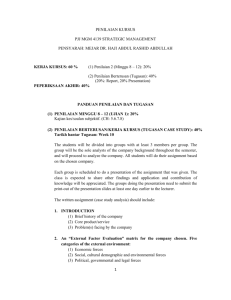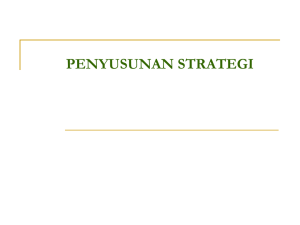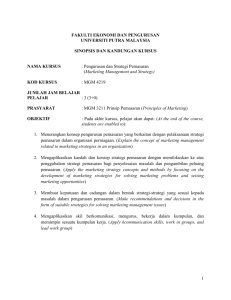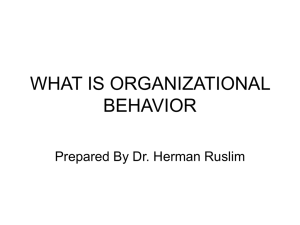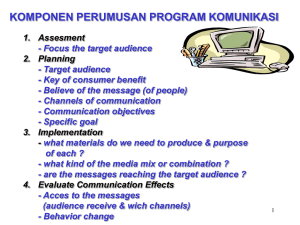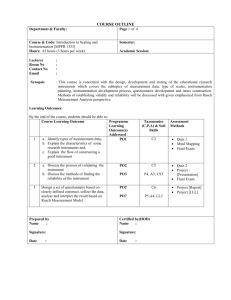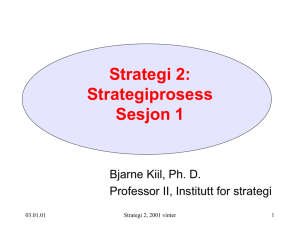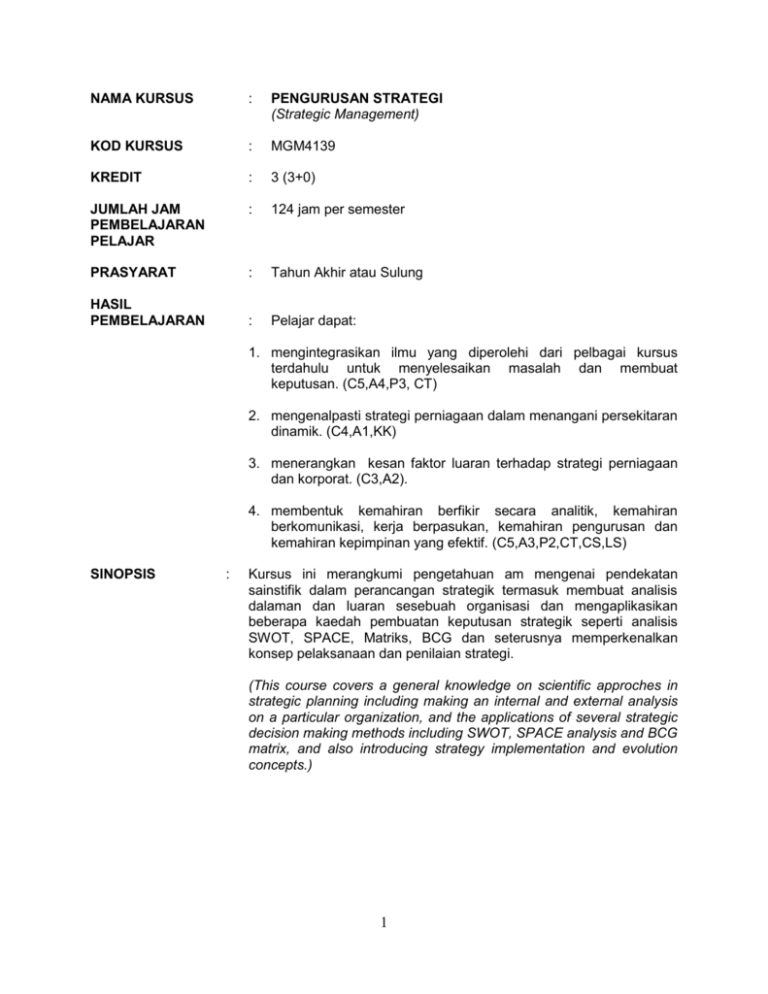
NAMA KURSUS
:
PENGURUSAN STRATEGI
(Strategic Management)
KOD KURSUS
:
MGM4139
KREDIT
:
3 (3+0)
JUMLAH JAM
PEMBELAJARAN
PELAJAR
:
124 jam per semester
PRASYARAT
:
Tahun Akhir atau Sulung
HASIL
PEMBELAJARAN
:
Pelajar dapat:
1. mengintegrasikan ilmu yang diperolehi dari pelbagai kursus
terdahulu untuk menyelesaikan masalah dan membuat
keputusan. (C5,A4,P3, CT)
2. mengenalpasti strategi perniagaan dalam menangani persekitaran
dinamik. (C4,A1,KK)
3. menerangkan kesan faktor luaran terhadap strategi perniagaan
dan korporat. (C3,A2).
4. membentuk kemahiran berfikir secara analitik, kemahiran
berkomunikasi, kerja berpasukan, kemahiran pengurusan dan
kemahiran kepimpinan yang efektif. (C5,A3,P2,CT,CS,LS)
SINOPSIS
:
Kursus ini merangkumi pengetahuan am mengenai pendekatan
sainstifik dalam perancangan strategik termasuk membuat analisis
dalaman dan luaran sesebuah organisasi dan mengaplikasikan
beberapa kaedah pembuatan keputusan strategik seperti analisis
SWOT, SPACE, Matriks, BCG dan seterusnya memperkenalkan
konsep pelaksanaan dan penilaian strategi.
(This course covers a general knowledge on scientific approches in
strategic planning including making an internal and external analysis
on a particular organization, and the applications of several strategic
decision making methods including SWOT, SPACE analysis and BCG
matrix, and also introducing strategy implementation and evolution
concepts.)
1
KANDUNGAN
KULIAH :
Jam
Pembelajaran
Bersemuka
1. Pengenalan Pengurusan Strategi
- Proses pengurusan strategi
- Faedah pengurusan strategi
- Tahap-tahap pengurusan strategi
2. Kenyataan Wawasan dan Misi Perniagaan
- Kenyataan wawasan
- Kenyataan misi
- Kepentingan wawasan dan misi
- Ciri-ciri wawasan dan misi
- Menulis dan menilai wawasan dan misi
3
3. Analisis Luaran
- Mengenalpasti faktor-faktor persekitaran luaran
- Analisis persaingan industri (Porter)
- Matrik Penilaian Faktor Luaran (EFE)
- Matriks Profail Bersaingan (CPM)
4
4. Analisis Dalaman
- Mengenalpasti faktor-faktor persekitaran dalaman
- Rantaian nilai
- Matriks Penilaian Faktor Dalaman (IFE)
4
5. Strategies in Action
- Jenis strategi (integrasi, intensif, pempelbagaian, defensif)
- Alat mencapai strategi
- Pakatan strategik
6
6. Kaedah Analisis dan Pemilihan Strategi
- Matriks Kekuatan-Kelemahan-Peluang-Ancaman (SWOT)
- Matriks Penilaian Kedudukan dan Tindakan Strategik
(SPACE)
- Matriks Boston Consulting Group (BCG)
- Matriks Dalaman-Luaran (IE)
- Matriks Strategi Utama
- Matriks Perancangan Strategik kuantitatif (QSPM)
8
7. Pelaksanaan Strategi
- Hubungan struktur dan strategi
- Penstrukturan semula
- Perekayasaan semula
- Pengurusan sumber manusia
- Mengurus resitance kepada perubahan
4
Penilaian dan Kawalan
3
4
2
8.
9.
10.
-
Rangkakerja Penilaian strategi
Balance Scorecard
Sistem penilaian yang efektif
Rancangan kontingensi
Isu-isu Strategi di peringkat Antarabangsa
- Peringkat perniagaan (strategi generik perniagaan Porter)
- Peringkat Korporat (multidomestik, transnasional, global)
2
Strategic Management Case Analysis
-Menyediakan kes
-Menulis analisis kes
-Oral Presentation
4
Jumlah
RUJUKAN
:
42
1. David, F.R. (2013). Strategic Management: Concepts and
Cases (14th Edition). New Jersey: Prentice Hall International,
Inc.
2. Hitt, M.A., Ireland, R.D. and Hoskisson, R.E. (2007). Strategic
Management: Competitiveness and Globalization: Concepts (7th
Edition). Ohio: South- Western/Thomson.
3. Thompson, J. and Martin, F. (2005). Strategic Management:
Awareness and Change (5th Edition). London: Thomson Learning.
4. Wheelen, T.L. and Hunger, J.D. (2006). Strategic Management
and Business Policy (10th Edition). New Jersey: Pearson/Prentice
Hall.
5. Zainal A. Mohamed. (2007). Pengurusan Strategik. Kuala Lumpur:
Utusan Publications and Distributors Sdn. Bhd.
PENILAIAN
:
1. Kerja Kursus (Lihat arah penilaian untuk kerja kursus): 60%
2. Peperiksaan Akhir: 40%
3
PENILAIAN KURSUS
MGM 4139 STRATEGIC MANAGEMENT
PJJ 2013
PENSYARAH: MEJAR Dr. HAJI ABDUL RASHID ABDULLAH
KERJA KURSUS: 60%
(1) Penilaian Minggu 8-12 (Ujian Pertengahan): 10%
(2) Penilaian Berterusan (Tugasan No.2 Case Study ): 35%
(3) Penilaian Berterusan (Tugasan No.3 Oral Case
Presentation): 15%.
PEPERIKSAAN AKHIR: 40%
PANDUAN PENILAIAN DAN TUGASAN
(1)
PENILAIAN MINGGU 8-12 (UJIAN PERTENGAHAN): 10%
Peperiksaan bertulis selama 1jam 30 minit dalam bentuk soalan MCQ dan soalan
struktur. (Chapter 1 and 2).
Tarikh: 5 April 2013 (Week 6).
(2) PENILAIAN BERTERUSAN (TUGASAN NO.2 CASE STUDY): 35%
Tarikh hantar Tugasan: Week 12
The students will be divided into groups with at least 2 members per group. The
group will be the sole analysts of the company throughout the semester, and will
proceed to analyze the company. All students will do their assignment based on
the chosen company.
Each group is scheduled to do a presentation of the assignment that was given.
The class is expected to share other findings and applications and contributions
of knowledge will be appreciated. The groups doing the presentation need to
submit the print-out of the presentation slides at least one day earlier to the
lecturer.
The written assignment (case study analysis) should include:
1. INTRODUCTION
(a) Brief history of the company
(b) Core product/service
(c) Problem(s) facing by the company
4
2. An “External Factor Evaluation” matrix for the company chosen.
Five categories of external environment
(1) Economic forces
(2) Social, cultural demographic and environmental forces
(3) Political, governmental and legal forces
(4) Technological forces
(5) Competitive forces
Relates each external category to your chosen company
List about 10 factors which include all the five categories of
external environment
Identify whether the factors are considered as opportunities or
threats.
In the EFE Matrix, identify/ classify the category of external
environment at the end of each factor.
3. An “Internal Factor Evaluation (IFE)” Matrix for your company.
Six categories of internal environment:
(1) Management
(2) Marketing
(3) Finance/accounting
(4) Productions/operations
(5) Research and development
(6) Management information system
Relates each internal category to your chosen company
List about 10 factors which include all the six categories of internal
environment
Identify whether the factors are considered as strengths or
weaknesses
In the IFE Matrix, identify/ classify the category of internal
environment at the end of each factor.
4. A “SWOT Matrix” for your company
Transfer all the external factors (opportunities and threats) from your revised EFE
matrix to SWOT Matrix.
Transfer all the internal factors (strengths and weaknesses from your revised IFE
matrix to SWOT Matrix.
Reduce the font size and margin in order to place the SWOT matrix into one (1)
page only.
For each of the resultant strategy (SO, ST, WO and WT), suggest at least Two
(2) alternatives from the matching. Specify the factors involved in the matching
activity.
Briefly explain all the alternatives derived from the matching.
5
5. A “SPACE Matrix” for your company.
(1) Four dimensions of SPACE Matrix:
(2) Financial strengths (FS)-Internal
(3) Competitive advantage (CA)-internal
(4) Industry strengths (IS)-external
(5) Environmental stability (ES)-external
List about 5-10 factors for each dimension.
Determine the directional vector coordinate for your chosen company. Then,
draw the directional vector. Show each step towards obtaining the directional
vector.
Based on these results, briefly give your opinion pertaining to your chosen
company position.
6. Condensation of strategies (QSPM, regrouping, etc)
Transfer all the alternatives strategies (SWOT and SPACE) into QCPM in
order to select the best strategy to be applied by the company. Give your
justification.
7. Conclusion
Last, propose only One (1) most appropriate strategy to be selected and
implemented by the company from the QSPM.
Briefly explain how the proposed strategy can overcome the problem
facing by the company.
Submission date: Week 12
(3) PENILAIAN BERTERUSAN (TUGASAN NO.3 ORAL CASE PRESENTATION):
15%.
Presentation date: Week 13-Week 14
Each group is scheduled to do a presentation of the assignment (case study
analysis) that was given. The class is expected to share other findings and
applications and contributions during the presentation. The groups doing the
presentation need to submit the print-out of the presentation slides at least one
day earlier to the lecturer. Each group is given about 30-35 minutes to present
their findings of the case study analysis on the assigned date, followed by 5-10
minutes of Q&A (35-45 minutes/group).
The presentation will be evaluated based on the group assessment and
individual assessment. The criteria of presentation assessment (group and
individual) are as attached.
Presentation date: as assigned.
PEPERIKSAAN AKHIR: 40%
Short essay (Chapters to announced later)
6
7

